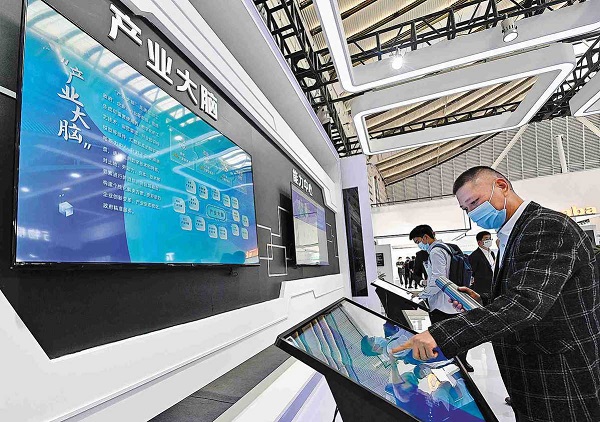
- Home
- Media Center
-
Events
- Wuzhen Summit
- Regional Forums
- Practice Cases of Jointly Building a Community with a Shared Future in Cyberspace
- World Internet Conference Awards for Pioneering Science and Technology
- The Light of Internet Expo
- Straight to Wuzhen Competition
- Global Youth Leadership Program
- WIC Distinguished Contribution Award
- Membership
- Research & Cooperation
- Digital Academy
-
Reports
- Collection of cases on Jointly Building a Community with a Shared Future in Cyberspace
- Collection of Shortlisted Achievements of World Internet Conference Awards for Pioneering Science and Technology
- Reports on Artificial Intelligence
- Reports on Cross—Border E—Commerce
- Reports on Data
- Outcomes of Think Tank Cooperation Program
- Series on Sovereignty in Cyberspace Theory and Practice
- Other Achievements
- About WIC
- 中文 | EN

Zhejiang feeling benefits of fiber-optic revolution

A visitor touches a screen to learn about the industrial internet at the Zhejiang exhibition booth during the ongoing WIC. WEI XIAOHAO/CHINA DAILY
"A future factory is the more advanced form of a digital factory and intelligent factory," said Lu Shan, vice-governor of Zhejiang.
A future factory, as a new concept, refers to the extensive use of digital twins, artificial intelligence, big data and other new generation information technologies in all the processes of a manufacturing plant.
The goal is to improve the enterprise value chain and core competitiveness, leading the development of new intelligent manufacturing modern factories, according to the provincial government.
The province plans to increase the number of future factories to 100 in five years, Lu said.
Official statistics show that the added value of the province's digital economy was 3.6 trillion yuan in 2021, accounting for 48.6 percent of its GDP. At present, 7.3 percent of the added value went to research and development of the digital economy's core industries in Zhejiang.
In the Digital China Development Report (2021) released by the State Internet Information Office, Zhejiang ranked first among all provincial regions in the Chinese mainland.
At the province's Digital Economy High-Quality Development Conference held in July, the provincial authorities said the annual added value of Zhejiang's digital economy is projected to exceed 7 trillion yuan in five years. The annual added value of core industries for the digital economy will exceed 1.6 trillion yuan by then, they added.

The World Internet Conference (WIC) was established as an international organization on July 12, 2022, headquartered in Beijing, China. It was jointly initiated by Global System for Mobile Communication Association (GSMA), National Computer Network Emergency Response Technical Team/Coordination Center of China (CNCERT), China Internet Network Information Center (CNNIC), Alibaba Group, Tencent, and Zhijiang Lab.





